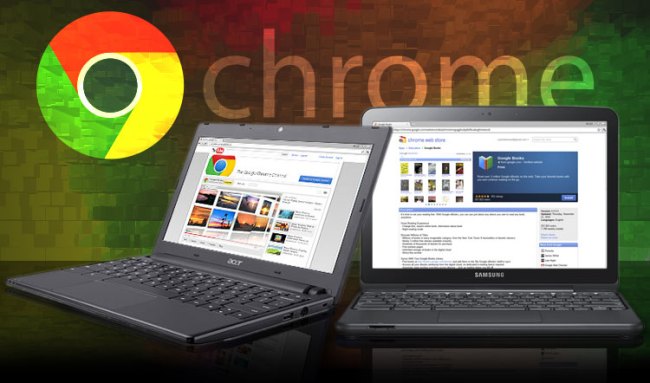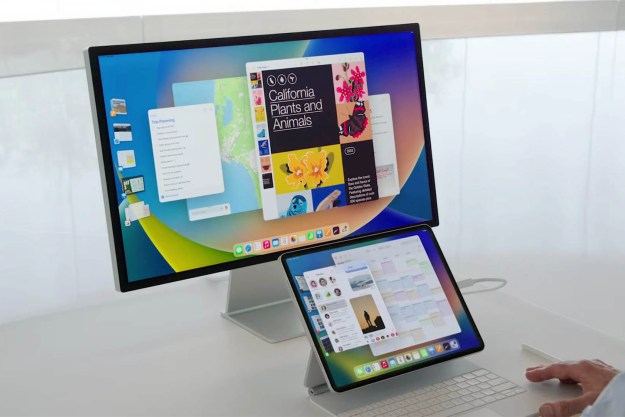
It is funny how often it generally takes for a new idea to stick in the market. We first started messing around with tablets in the early 90s. Now, nearly 20 years later, only one vendor has made a successful one: the Apple iPad.
Google’s new Chromebooks are essentially thin clients — lightweight computers dependent on servers (the cloud in this case) which have terminals as their distant ancestors. Sun and Oracle tried to bring the thin client concept to market 20 years ago and failed miserably. Their efforts continued on as products from Wyse and HP, but never became the PC alternatives Scott McNealy and Larry Ellison’s envisioned them as.
Still, as with tablets, the second time could be a charm. Google is hell bent on proving that ChromeOS can be what Larry and Scott hoped: a true replacement for the PC. In their favor, a lot of the negatives that nearly killed the initiative last time have disappeared. Working against them, Windows 7 is vastly superior, and the iPad already serves as a better PC alternative than ChromeOS can ever be. What we know of Windows 8 suggests it blends ChromeOS and iPad concepts into Windows. If Google misses its shot, Microsoft likely benefits. Let’s explore this.
 The birth and near death of thin clients
The birth and near death of thin clients
There was a lot of hope in the Windows wannabe camp back in 1993, when Larry Ellison first talked about thin clients, and Sun later embraced the ideal to create the Sun Ray one. A few years later, I hosted a bunch of CIOs in Europe at a desktop conference, and their reaction kind of summed up the problem. In the meeting there were (and this was unusual) a group of Sun executives who were listening in. They were supposed to act like well-behaved kids — seen and not heard. Unfortunately, they evidently missed that memo and started dumping on Windows. At the time, Windows NT was in its infancy, and folks weren’t that happy with how Windows 95 had turned out.
To my surprise, the CIOs and IT folks in the room tore into the Sun execs, explaining in great detail why the Sun Ray 1 thin client was brain dead stupid. It was a lock-in product that forced them to buy from Sun for all future upgrades (they preferred pitting vendors against each other). It was horribly expensive to implement. It had severe problems running current PC code. The migration costs were massive. Basically, they told Sun to take a hike because they weren’t about to trade some annoying problems for some catastrophic ones. The Sun execs looked like they had been hit by a bus.
Larry got that thin clients had to be cheap, and understood that they would likely play best in places like schools, where the security features inherent in them (it was really hard to mess them up compared to PCs) would be valued. However, he picked what appeared to be a girlfriend to run the independent company. Showcasing why executives shouldn’t think with their little heads, the effort failed.
Since then, we have seen some innovative alternatives from companies like Clear Cube, which did remote PCs, and full on thin clients from Wyse and HP, but these mostly went places where data entry was king, serving as replacements for terminals. PCs running Windows are so inexpensive and entrenched that thin clients just don’t seem to have any traction. But, then again, no one has really made a major push in this space for years either. And while mobile is huge in the PC space, it is more of an afterthought in thin clients. At least until now.
ChromeOS
Back in the 90s, we thought of ISDN as broadband and hadn’t even really learned to spell Wi-Fi, let alone had a clue what 3G or 4G were. With 4G and current generation Wi-Fi, we have access to bandwidth that seemed impossible two decades ago, and netbooks showcased that we could actually build some interesting laptops for under $400. While they didn’t run Windows very well, they sure could run a thin operating system, and the iPad demonstrated that a well-tuned OS running on reasonably priced hardware could do amazing things.
So the potential is here to revisit thin clients successfully. There are, however some big issues.
The first is that netbooks largely failed in market, demonstrating that people just didn’t want to buy cheap crap. The iPad was successful largely because people didn’t see it as a cheap, limited laptop without a keyboard, which it actually kind of is. They saw it as something different thanks to its slate form factor and touchscreen. Don’t forget Steve Jobs himself introduced both the first and second generations of the iPad, and Apple wrapped it with a massive marketing campaign in order for folks to see the iPad as something magical rather than a crippled notebook. A lot of hard work went in to setting the proper perception.

The Chromebook looks like a laptop, making it much harder for buyers to see it as anything else. As for marketing, to say that Google has no concept of executing a marketing campaign at Apple’s level would be making a vast understatement. Google appears to have both an inadequate skill set and marketing budget. Add to this the distinct lack of success of Android Tablets, which should have been able to better draft in the iPad’s success, and you start to get worried. Add one more fact, that the Chromebook will be released before the offline capability is available, and you have the potential for a Xoom-like problem (the Xoom was released without 4G or Flash support, its two biggest features, and failed).
Why Google’s Chromebook sets the stage for Windows 8
It isn’t that Google’s Chromebooks are not potentially compelling; they actually look kind of interesting. The problem is that the netbook, Android Tablet and particularly the Xoom experience showcase what not to do, yet Google appears to be repeating all of these mistakes with the Chromebook. I actually think the product has promise, but that the company needs to channel Apple to make the concept work. Chromebooks need to appear less like cheap crippled laptops and more like something, well, iPad-like.
The technology is close to being where it needs it to be, but the Steve-Jobs-like marketing vision is missing. When you are trying for something disruptive like this, it is marketing, not engineering, that has to take the lead. Unfortunately, Google’s historic marketing weakness will doom this product unless the company addresses it. However there is little doubt that the Chromebook will set the stage for something else that may truly capture our imagination. Ironically, Google’s execution makes it likely that this future product will be Windows 8. The entrenched vendor, and that would be Microsoft, always has the home advantage, particularly when the challenger screws up.
According to the book “In the Plex,” Jobs mentored the Google founders, who then ripped off his iPhone ideas. Evidently, they didn’t understand or stay long enough to get the lesson on marketing. That’ll cost them.
Editors' Recommendations
- How to play Minecraft on a Chromebook
- How to update Chromebooks and Chrome OS
- The most common Chromebook problems and how to fix them
- How to copy and paste on a Chromebook
- iPad Pro vs. MacBook Air: It’s closer than you’d think



